Complimentary worldwide shipping on orders over $400 · No import tariffs for most countries
Complimentary worldwide shipping on orders over $400 · No import tariffs for most countries
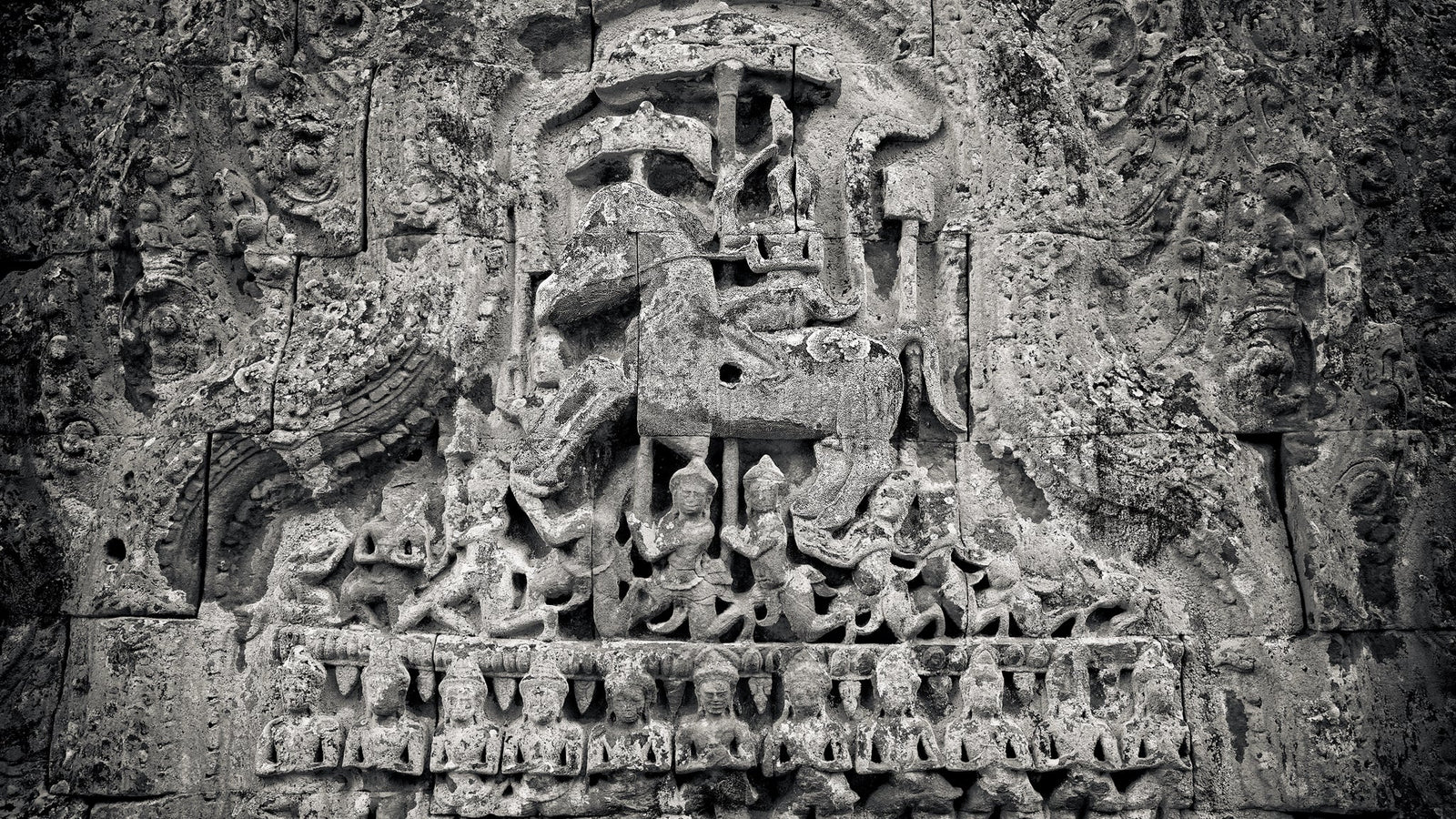
The Silent Gate of Awakening: The Buddha’s Great Departure
Sanctuary of Meaning · Artist’s Journal
Lucas Varro
Even a prince must leave the palace
if he longs to awaken.
—from a field note beside Tower 62, Ta Prohm
—
There are stories whispered in stone that do not need to shout.
They linger at the edge of vine and ruin, soft as dust falling through shafts of morning light.
And if you are quiet enough—if you walk slowly enough—they will open to you.
This morning, I returned to Ta Prohm. Not for the grandeur of trees devouring towers, nor the famous roots enfolding doorways—but for one quiet gesture carved high above the southern lintel of Tower 62. A moment easily overlooked, yet holding the hush of all true departure.
Siddhartha, the prince who would become Buddha, is shown leaving the palace.
Not with triumph, but with sorrowful resolve.
The stone has weathered. The forms blur.
Yet the feeling remains—undiminished.
The prince sits upon Kanthaka, his loyal horse, beneath the great parasols of royalty. Courtly banners sway behind him, their meaning already fading. Only two of the four celestial beings—lokapalas—are still visible, but their gesture is unmistakable: they cradle the horse’s hooves in their hands, guiding each step in sacred silence.
This is the Great Departure.
Not from a battlefield, but from illusion.
Not in defiance, but in devotion.
—
We often speak of renunciation as a rejection, a severing. But here—etched in the sandstone of a crumbling pediment—it becomes an act of reverence. Siddhartha does not run from life. He bows to its impermanence.
He looks once more at his sleeping wife, his newborn son, and the women of the court who danced for him.
Then he turns, and walks away.
And the gods themselves open the gates.
The city does not rouse. No footfall is heard.
Each sound is muffled by compassion.
The heavens bend themselves around his steps.
It is easy to miss the sacredness of this moment in passing. But I stood there for some time—watching, sketching, listening. The morning was wet from earlier rain. A thin mist hung in the galleries. A single drop slid down the stone leg of one of the divine attendants, and for a moment I could feel the hush of the entire night that bore him onward.
like mist on stone—
he leaves without anger,
only awakening

The Great Departure, Ta Prohm Temple, Angkor, Cambodia.
In the pediment above the southern entrance of Tower 62, Siddhartha is depicted departing the palace. Banners, fans, and parasols trail behind him. Celestial attendants cradle his horse’s hooves to silence the sound of exit. It is not flight, but surrender.
—
Later in the tale, Siddhartha dismounts. At the edge of a forest hermitage, he removes his royal ornaments and fine silks. He hands them to Chandaka—his loyal squire and friend.
This is a second departure—quieter still.
Chandaka pleads. He speaks of duty, of love, of sorrow. But Siddhartha does not waver. He answers with a truth that echoes even now:
“Even if I remained, death would one day part us.”
And so he sends Chandaka home—not with command, but with compassion.
There are moments like this in every temple: not carved in stone, but carved in us. Thresholds not of architecture, but of soul.
To cross them is not to abandon the world,
but to meet it in its deepest silence.
—
I have walked past this carving many times.
But today, in the quiet after rain,
I realised it is not only about the Buddha.
It is about each of us.
The moment we know we must leave the palace.
The moment we begin the path of stillness.
—
The gods do not shout—
but if you listen,
they will open the gate.
Also in Library
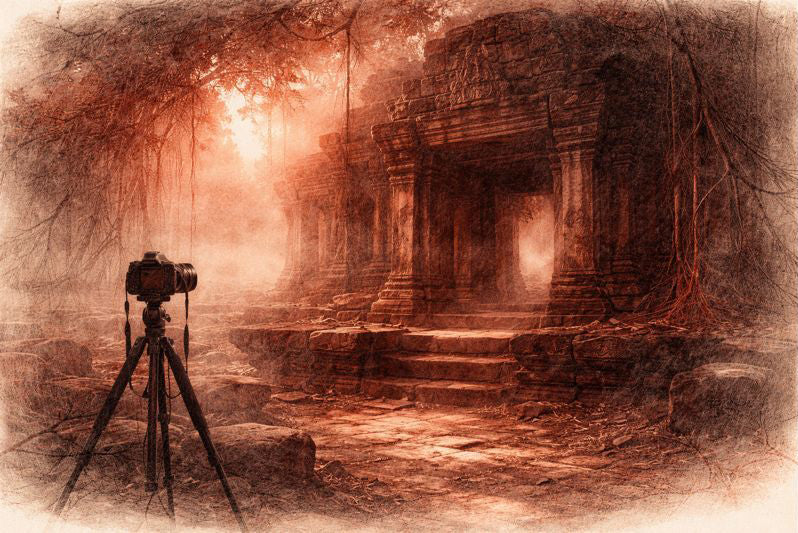
Before the Shutter Falls
3 min read
Before the shutter falls, fear sharpens and doubt measures the cost of waiting. In the quiet hours before dawn, the act of not-yet-beginning becomes a discipline of attention. This essay reflects on patience, restraint, and the quiet mercy that arrives when outcome loosens its hold.
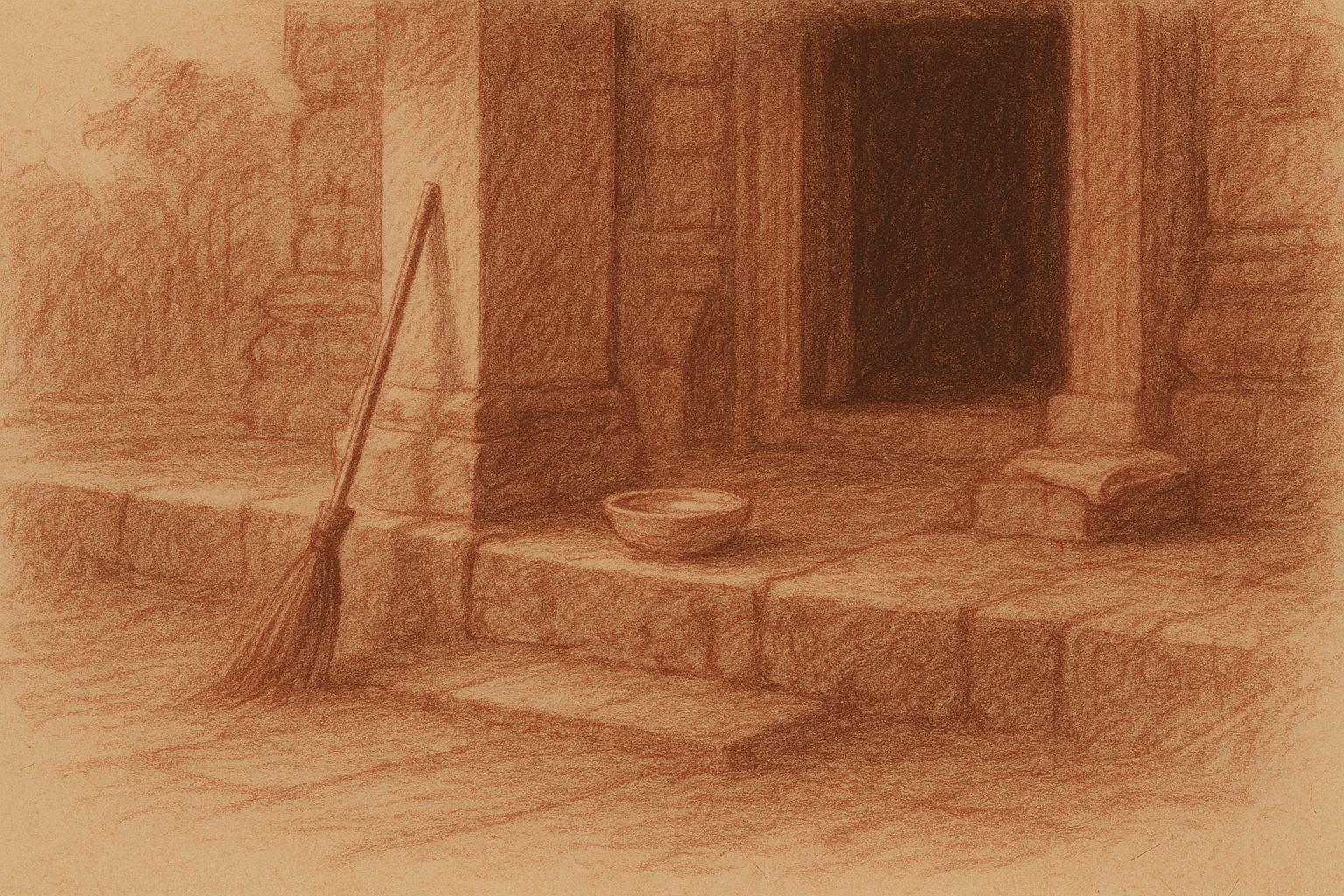
Those Who Keep the Way Open — On the Quiet Guardians of Angkor’s Thresholds
3 min read
Quiet gestures shape the way into Angkor — a swept stone, a refilled bowl, a hand steadying a guardian lion. This essay reflects on the unseen custodians whose daily care keeps the thresholds open, revealing how sacredness endures not through stone alone, but through those who tend its meaning.
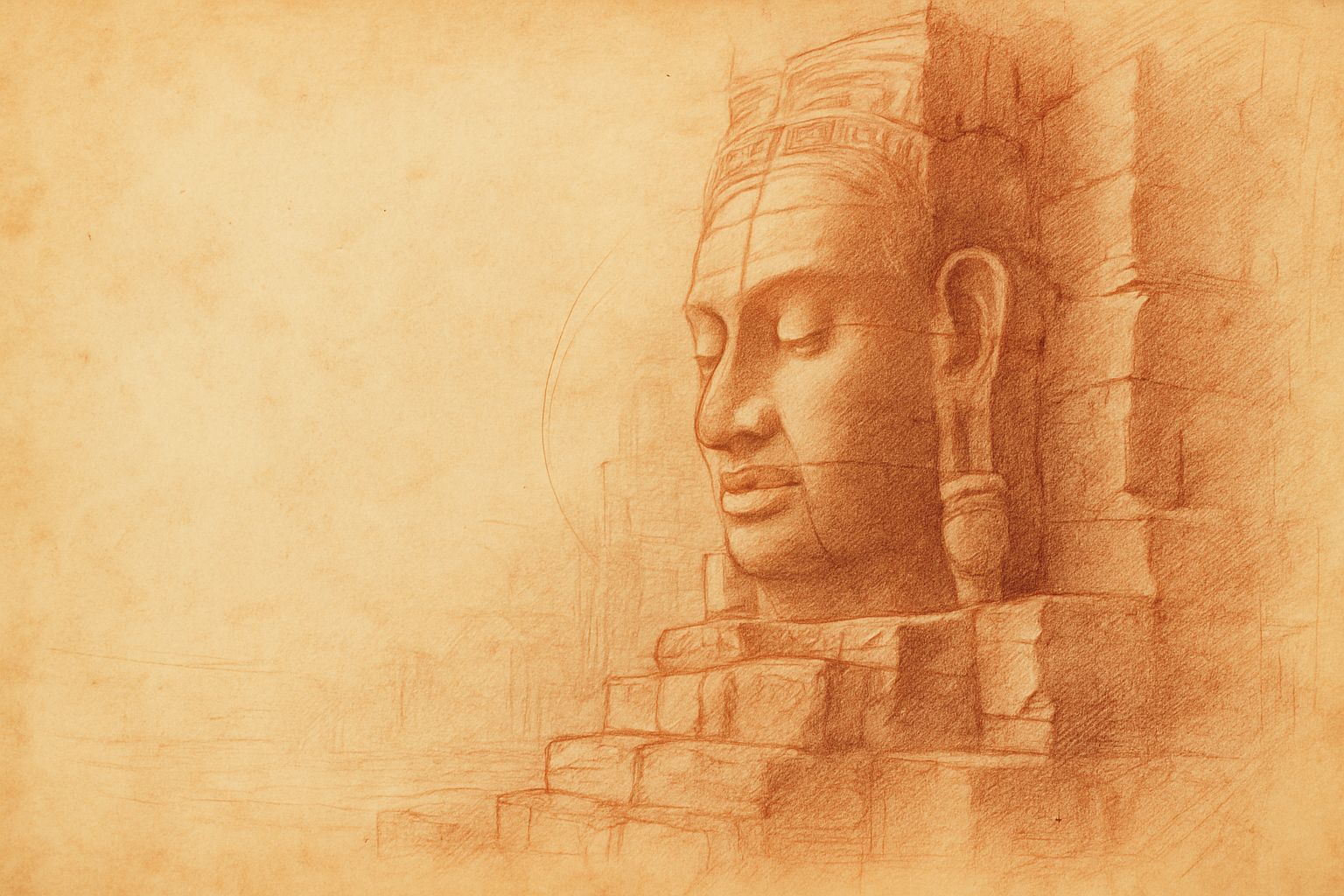
Multiplicity and Mercy — The Face Towers of Jayavarman VII
5 min read
A new vision of kingship rises at the Bayon: serene faces turned to every horizon, shaping a world where authority is expressed as care. Moving through the terraces, one enters a field of steady, compassionate presence — a landscape where stone, light, and time teach through quiet attention.
Join My Studio Journal
Receive occasional letters from my studio in Siem Reap—offering a glimpse into my creative process, early access to new fine art prints, field notes from the temples of Angkor, exhibition announcements, and reflections on beauty, impermanence, and the spirit of place.
No noise. No clutter. Just quiet inspiration, delivered gently.
Subscribe and stay connected to the unfolding story.
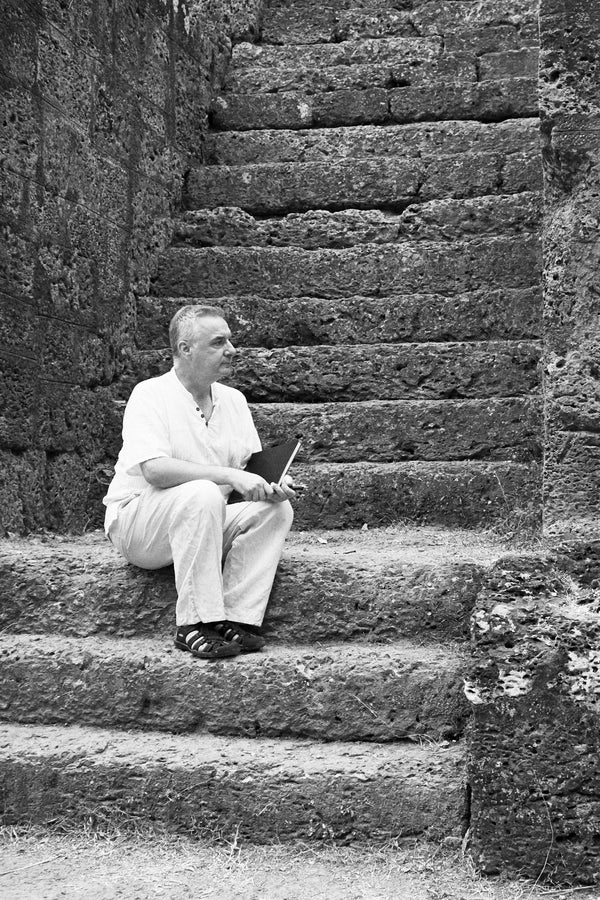
Join My Studio Journal
Receive occasional letters from my studio in Siem Reap—offering a glimpse into my creative process, early access to new fine art prints, field notes from the temples of Angkor, exhibition announcements, and reflections on beauty, impermanence, and the spirit of place.
No noise. No clutter. Just quiet inspiration, delivered gently.
Subscribe and stay connected to the unfolding story.
